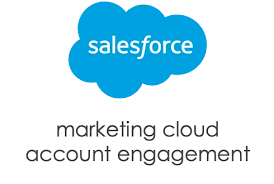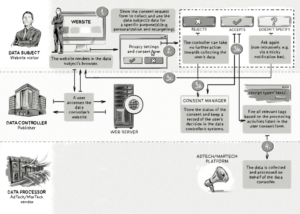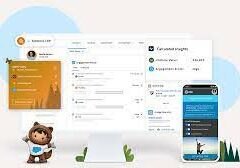Salesforce Genie, hailed as the most significant innovation in Salesforce’s history, has morphed into Salesforce Data Cloud. Operating on a grand scale, Data Cloud seamlessly processes and stores real-time data streams, integrating them with Salesforce data to unlock highly personalized customer experiences. Salesforce Data Cloud vs Salesforce CDP – which one is for me?

You might wonder if this aligns with what Data Cloud (formerly Salesforce CDP) accomplishes—unifying versions of individuals across applications and providing customer experiences based on diverse data sources. To clarify, while Data Cloud shares similar goals and benefits with CDP, it represents an evolution beyond the technology of the former Salesforce CDP.

In the words of Eric Stahl, EVP Marketing at Salesforce, “With [Data Cloud], we moved the real-time data capabilities into the [Salesforce] platform so we can ingest, manage and activate data from anywhere. It’s also nested with Einstein for AI and Flow for automation.”
Data Cloud vs. Salesforce CDP: Key Differences
Data Cloud inherits the capabilities of Salesforce CDP but extends its benefits across the entire “Customer 360,” covering Salesforce’s product portfolio. Here are key differences:
- Target Use Cases:
- Salesforce CDP: Primarily designed for marketing segmentation and “activation.”
- Data Cloud: Spans the entire Salesforce product suite, covering sales, service, marketing, and more.
- Enhanced Segmentation & Segment Activation:
- Salesforce CDP: Enables efficient segmentation and activation primarily within the Marketing Cloud product suite.
- Data Cloud: Offers a broader range of activation uses across various Salesforce products.
- Underlying Architecture:
- Salesforce CDP: Directly linked to the Marketing Cloud product suite.
- Data Cloud: Works with all Salesforce Customer 360 products, sending data into multiple Salesforce “cloud” products.
- Zero-copy Architecture:
- Salesforce CDP: Relies on a zero-data copy architecture for direct access to data stored in data lakes.
- Data Cloud: Continues the zero-data copy architecture with enhanced extensibility capabilities.
- Bring Your Own AI:
- Data Cloud: Allows integration with external AI platforms, such as SageMaker, for increased extensibility.
- MuleSoft and Tableau Integrations:
- Data Cloud: Offers integrations with MuleSoft and Tableau at a higher level of functionality.
Data Cloud, the successor to Salesforce CDP, extends beyond traditional CDP definitions. With a focus on diverse use cases beyond marketing and a zero-data copy architecture, Data Cloud stands as one of Salesforce’s most promising products. While Data Cloud shares purposes and benefits with CDPs, it represents a new era in Salesforce’s commitment to customer data unification, activation, and insight generation. Salesforce CDP remains available and operational, providing users with distinct options tailored to their specific needs.
If it is time to explore the power of Salesforce Data Cloud to your sales and marketing efforts, contact Tectonic today.












